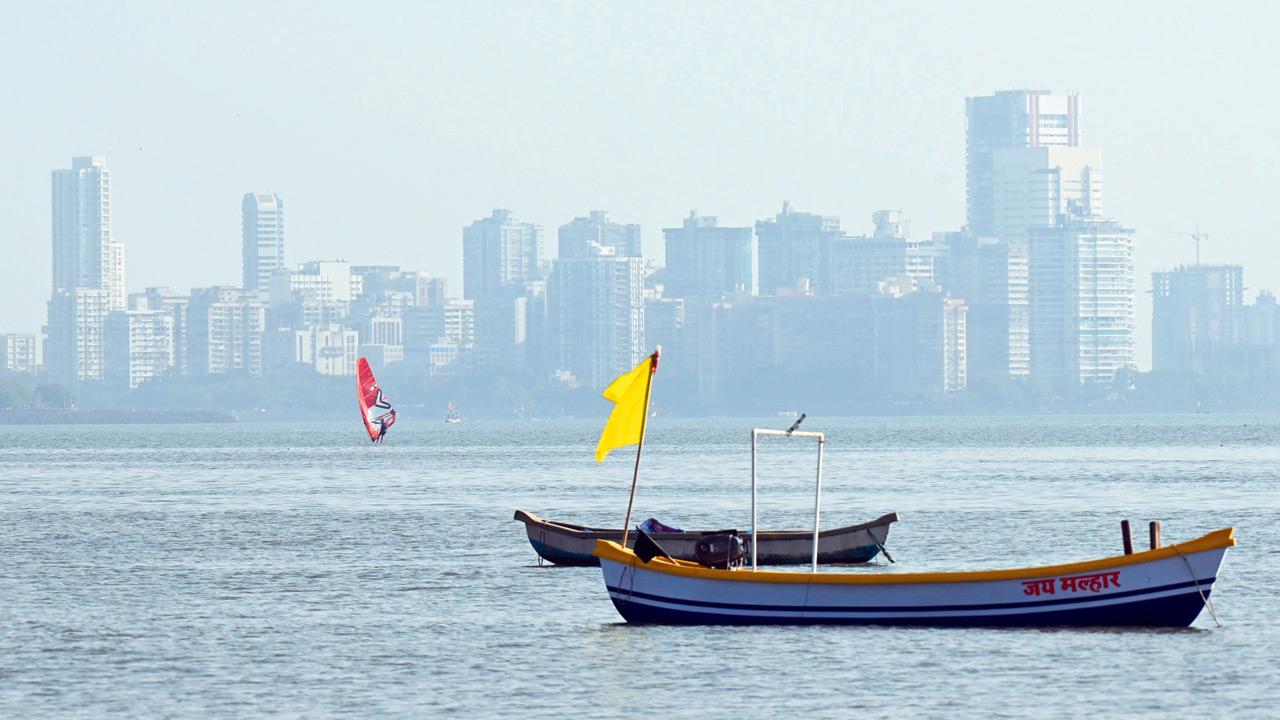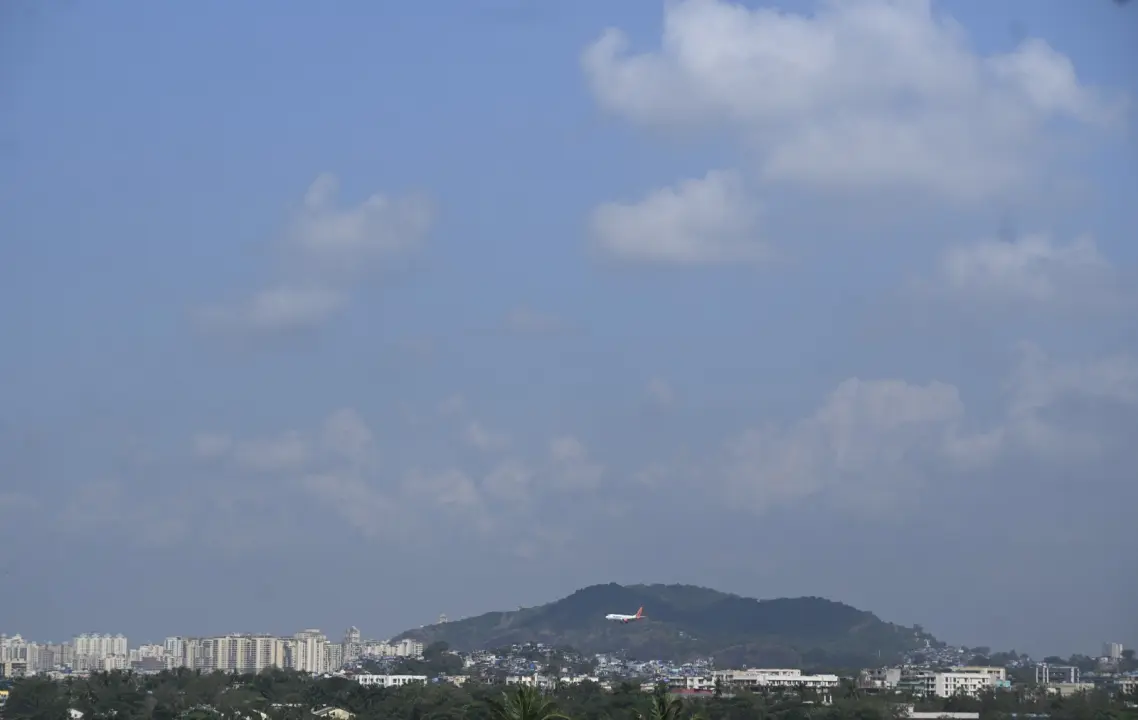Yesterday, the city woke up to a thick haze across the city, yet again raising concern over worsening air quality. While the mist disappeared over the course of the day, Swiss agency IQAir recorded the air quality index (AQI) as 142 (as of 7.51pm on Saturday), making Mumbai the ninth most polluted city in the world yesterday. Delhi features on the top of the list, ranking as the most polluted city in the world with an AQI of 258 as per IQAir.
As per the Central Pollution Control Board, Mumbai’s AQI was at 160, in the “moderate” category. Experts have warned that AQI is likely to worsen during winter, as seen previously in 2023-24. As we move from prolonged rains to impending winter, Mumbai has consistently recorded worsening AQI during this seasonal change since 2022, particularly from November to January. This is due to reduced atmospheric moisture and considerably slow wind speed in comparison to the monsoon months.
Navi Mumbai as seen from the Atal Setu. Pics/Satej Shinde and SAYYED SAMEER ABEDI
Mumbai recorded maximum temperatures of 33 degrees Celsius, with atmospheric moisture of 32 per cent, and northeasterly winds with a speed of approximately 14 kmph. During peak monsoon season, wind speeds range between 40 to 50 kmph, with atmospheric moisture up to 90 per cent on rainy days. According to experts, the smog-like conditions are most likely to occur in the mornings, between 4 am and 7 am, because of colder temperatures and stagnant or heavy air. This is the same phenomena that leads to poor air quality during winter months. This can lead to complaints of waking up with a sore throat, or heavy eyes.
Dr Harish Chafle, senior pulmonologist and critical care consultant, said, “When we move from warmer to colder months, we notice this phenomenon. We will see patients going for morning walks, and returning experiencing more fatigue than usual.” Experts blame the worsening AQI on increasing particulate matter (PM10 and PM2.5) from vehicular traffic, construction sites, industrial grit, among other human activity-related pollutants.
According to information from the BMC, there are 1200 construction sites in the city. A senior civic official said, “Of these 550 sites have installed AQI monitors on their premises, and 136 others have already floated tenders to procure AQI monitoring devices.” BMC conducted several back to back meetings with representatives from MCHI, NAREDCO and PEATA starting October 28, and issued an ultimatum to builders to comply with the Bombay High Court and BMC requirements to monitor and curb the impacts of pollution from these sites on the AQI of Mumbai.
A special Dashboard is being prepared by the civic body to record and monitor this data. It will be completed within one month, the official told mid-day. Areas such as BKC and Deonar, in particular, experienced worse air quality and visibility, with AQI of 239 in BKC and 204 in Deonar, putting both suburbs in the “Poor” category as per CPCB.
Expert speak
Sumeira Abdulali, convenor of Awaz Foundation, said, “The issue is that the civic body has consistently failed to address the problem of pollution and bad air quality. We have been raising this issue for more than three years now, and during this time, the air quality has become consistently bad. We see the cyclical phenomena where the air quality worsens during winter months, and then monsoons may bring respite due to the rain. But even with rain, where does all that pollution really go — it will still settle on the roads.”
Rishi Agarwal, who is an environmentalist, said, “As PM10 is a prominent pollutant, it is very evident that these areas are seeing continuous bad air quality due to the construction activities and traffic. It needs to be studied if high-rise buildings act as a windshield and cause a hurdle for wind circulation.











